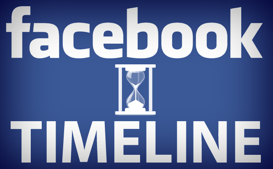As most are aware, or hopefully you are, Facebook has changed the format in which business pages are displayed, now called Facebook Timeline. Listed below are some changes you need to be aware of as it relates to your content strategy.
The two main things that affected our Content Strategy were the Custom Tabs and the News Feed. Although the news feed hasn’t changed completely as it still has some focus on the ‘now’, we are also heavily concentrated on the past and future.
Here are 10 things to consider for your new Facebook Content Strategy:
1. Your Second Website
The new timeline allows all of your visitors to interact with a story that has a beginning, a middle and a present standing. Your Facebook story is important to your consumers and will use it as a secondary website as they will be able to find out what’s new, and what’s important to your brand.
2. Keep your Profile Picture Simple
As said above, your cover picture is where you portray your brand. Your profile picture should be basic as you don’t want to confuse your consumer by sending mixed messages.
Tip: The profile image will be as small as a 30 pixel square, so it’s best to use your company logo. You do not need to include the name of your organization in your main avatar because the name of your Facebook page travels with your avatar everywhere on Facebook.
3. Finish Your ‘About’ Section
The ‘About’ section of your Facebook profile is just as important as your cover image. This section of your profile should include information about your business, including your address and contact information.
4. Tell a Story in your Cover Picture
The purpose of your cover image is to create a powerful and lasting first impression. You want to think of your cover picture as the definition of your brand. It is very important that you keep this image up to date and relevant to what your brand portrays and who your target audience is.
5. Create Milestones
Before the new timeline, anything you posted on Facebook was automatically tagged with the date it was posted. You are now able to select any date in the past. A Milestone allows you to tell the story of your said picture which can be up to 830pixels by 403 pixels.
6. Focus on Photos
The new Facebook pages are much more visual than ever before and focus on telling a story overtime as opposed to only what’s happening now. Visual content is the best way to tell a story – think Pinterest (Blog posting on Pinterest coming soon)
7. No Default Tabs
Facebook pages no longer allow you to set a default tab for nonfans. Their primary use was to increase fan conversion rates. Now this has changed, you need to find other ways to do this e.g. engaging cover image, highlights and other ways to make a good first impression.
8. Highlight and Pin
One of the most exciting changes is the ability to highlight a post and pin it to the top of your Facebook page. Up until now, Facebook admins had little control over how posts were displayed on their page.
Highlighting turns any page story (normally a single column) into a full-width story. This is great for any large horizontal photos. Any highlighted photo must be within 846 pixels by 403 pixels.
Pinning a post allows you to draw more attention to a story by moving it to the top of your Facebook page. Once pinned to the top of the page, it will stay there for seven days or until you decide to unpin it, so think carefully about what you want to feature at the top of your page.
9. No Hard Sell Messaging
Facebook pages have a messaging feature allowing you to private message someone. Don’t be tempted to bombard them with messages which makes them feel uncomfortable. Use this feature to build and nurture relationships then you can discuss opportunities. Remember – you are limited to two messages for every one you receive.
10. Soft Sell
You might be fooled into thinking that just because you can now use a cover image, this gives you the right to use that space for any kind of hard selling. To avoid this kind of action, Facebook will not allow you to include any contact information like URL’s in the cover image.
Original post by: Gloople

